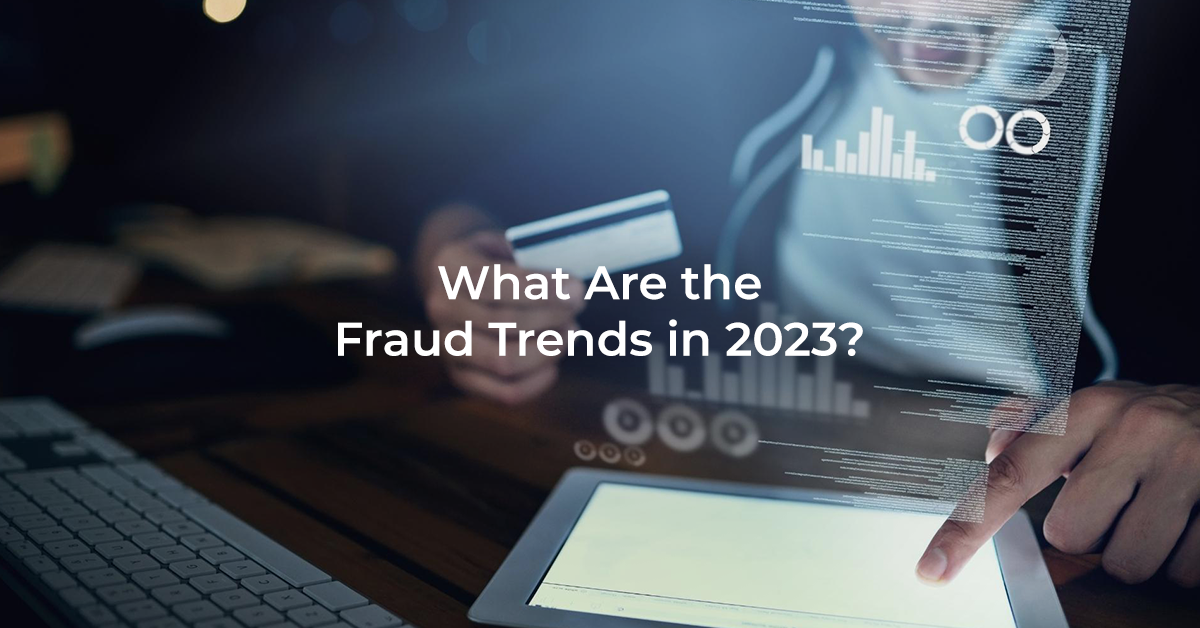
What Are the Fraud Trends in 2023?
In our increasingly digital world, where technology continues to shape our daily lives, the realm of fraud has also evolved, adapting to the latest advancements. In 2023, with numerous advancements in the financial services world, new and sophisticated fraud trends are also emerging simultaneously, challenging individuals, businesses, and authorities to remain vigilant and proactive in the fight against fraudulent activities. New digital payment methods, rise of cryptocurrencies, synthetic identities, exploitation of biometric data and insider fraud are among the main fraud trends seen in 2023 that are seriously threatening the integrity of the financial industry. In this constant fight against fraud, the financial institutions are entitled to apply strict and effective Know Your Customer (KYC) processes fortified with the equivalent technological solutions as the strongest weapon against fraud.
- Adoption of New Digital Payments and Methods
The adoption of new digital payments and methods is one of the most popular fraud trends in 2023. The reason behind this is the fact that the continuous move towards digital payments has been a double-edged sword. While it has boosted convenience and efficiency of the transactions, it has also paved new ways for the fraudsters to exploit the system. The prevalence of mobile wallets, rise of cryptocurrencies, and emergence of other digital payment methods has created a complex and vulnerable landscape that fraudsters are eager to discover and exploit.
Digital payments provide a fertile ground for fraud because of their relative anonymity and ease of use. Cybercriminals are specializing in social engineering techniques, such as phishing and spear-phishing, for manipulating individuals into disclosing personal information, which is aimed to be used for illegal transactions or identity theft. Moreover, the rapid proliferation of decentralized finance (DeFi) platforms and non-fungible tokens (NFTs) has been used by fraudsters as another way to tempt investors into making fraudulent investments with methods like scams and Ponzi schemes.
- Enhanced Synthetic Identity Fraud
Synthetic identity fraud is defined as forming a fictitious identity by combining real and fabricated information. This synthetic identity is then used to create accounts, apply for loans, and make payments or purchases, often resulting in substantial financial losses. In 2023, this type of fraud became even more complicated as the criminals discovered and started using advanced technological methods to avoid detection.
The biggest challenge of the financial institutions and credit agencies regarding this type of fraud is that they are struggling in distinguishing genuine identities from synthetic ones. The fact that instead of using a fully fabricated identity, fraudsters use legitimate personal information combined with fabricated details to create identities makes it very difficult to detect and prevent unless the financial institution has a robust and cutting-edge id verification system in place.
- Exploitation of Biometric Data
Biometrics including fingerprints and facial recognition, has been known as one of the safest methods of authentication because they are unique by nature. However, in 2023, fraudsters have found a way to exploit biometric data as well with the help of technological enhancements. The most common methods used by criminals is either to replicate biometric features or to deceive the authentication systems and get access. As biometric data is seen as a secure authentication method and increasingly integrated into financial and personal devices, exploitation of it might bear severe consequences. These include but are not limited to unauthorized access to an individual’s or a firm’s bank accounts, medical records and other personal and sensitive information.
- Rise of Insider Fraud
One of the other financial concerns of 2023 is insider fraud which means the fraudsters are the individuals inside the organization. These people generally have access to sensitive data and therefore they are prone to abuse their privileges for personal gain. Insider fraud may come in different forms such as theft of data, corruption or cooperation with external fraudsters but, in any case it can result in tremendous financial losses and reputational damage for the institutions.
Why Are KYC Solutions Important for Fighting with Fraud?
It is possible to deduce that the fraud trends of 2023 are closely intertwined with the technological enhancements and the battle against fraud has become more complex and challenging than ever before. Know Your Customer (KYC) solutions are the most effective and powerful weapon against fraud trends of this era. Together with the empowerment of technological solutions, KYC practices have rapidly evolved from regulatory requirements into strategic tools that play a vital role in safeguarding financial systems, preventing fraudulent activities and maintaining the integrity of businesses.
First of all, to combat identity fraud, KYC solutions serve as the first line of defense against fraudulent activities by ensuring the accurate identification and verification of customers. By using robust identity verification methods, including document scanning, biometric authentication, and database checks, KYC solutions empower organizations to verify the authenticity of the person on the other end of a transaction or interaction. Machine learning (ML) and artificial intelligence (AI) technologies that are integrated into the KYC systems can play a vital role in identifying patterns and anomalies that indicate potential synthetic identities. This verification process acts as a powerful discouragement for fraudsters, as they are less likely to target businesses with stringent KYC protocols in place.
Operating a robust KYC system not only helps verify the identity of customers, but also enhances suspicious activity detection. By continuously monitoring customer behavior and transaction patterns, these systems can detect anomalies that may hint fraudulent behavior. Unusual transaction amounts, frequency, or locations can trigger alerts for further investigation, helping businesses to promptly act on the potential threats.
In conclusion, the fraud landscape in 2023 is highlighted by the combination of evolving technology and criminal cunningness. The adoption of new digital payment methods, the sophistication of synthetic identity fraud, the exploitation of biometric data, and the rise of insider fraud all pose significant challenges for individuals and financial institutions. Staying informed and alert about these trends and investing in robust and cutting-edge KYC solutions are critical to remain secure within this complex landscape and fight against the ever-evolving threat of fraud.

